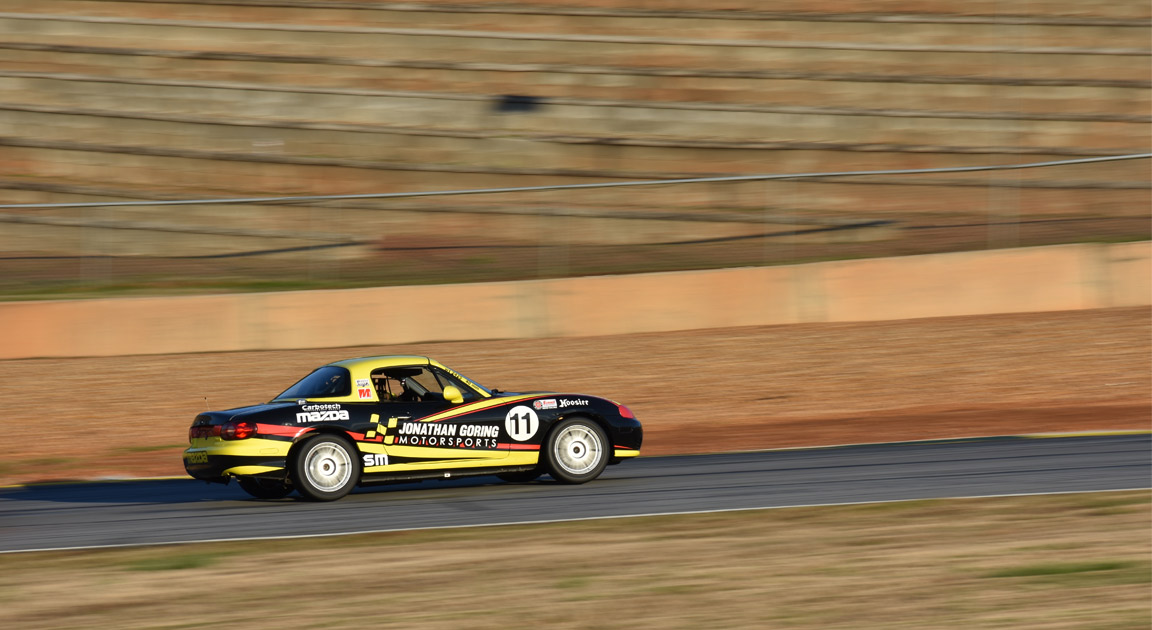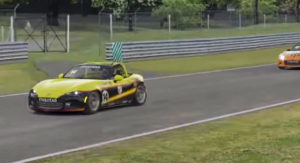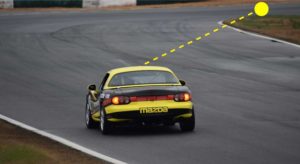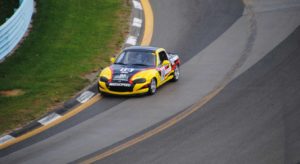It’s the middle of the day and you’re headed out for your 3rd session. It’s mid-afternoon, sunny and the car/track feel great!
The balance of the car has been spot on all day, so you opted to not make any suspension or tire pressure adjustments to the car.
SURPRISE! Suddenly and seemingly out of nowhere, the car has a big understeer and it takes forever to the car to turn!
Why did this happen, and better yet why wasn’t it happening all day?
Even If The Car Doesn’t Change, The Track Does!
In racing, NOT making a change is typically equally as risky as making one.
The strategy of “not touching the car because it feels good” isn’t necessarily the safest option because it doesn’t account for one thing. The track CHANGES throughout the day even if you leave the car alone!
So even if you decide to leave the car as is- count on it likely handling differently next time you’re out.
9/10 times the handling will feel completely different when you simply compare a morning session to an afternoon one, even if the weather has stayed largely the same.
So, what does this mean to the performance driver? What about the racer?
There’s a big distinction here.
For the HPDE guy, usually there are limited set up changes that can be made to the car. Often times the only realistic change that can be made during the day are tire pressure adjustments.
For the racer, they may have a little bit more to work with. Maybe there’s adjustable ride heights, shocks, sway bars or even spring rates.
But, both HPDE and Race Drivers have one adjustment in common.
That critical nut between the steering wheel and the seat. The driver!
So how can we change the driver to adapt to the way the car handles?
Adapting your own driving to the way the car is handling is a unique skill set that takes years and years of driver development.
That “seat of the pants” feel plays a large roll in identifying whether the car is understeering, oversteering or even 4 wheel drifting.
Learning what fixes each type of slide can only come through experience.
Ok, I need more experience. But how specifically can I work on this?
In ultimate simplicity, a tire slides when it’s being pushed harder sideways, across the pavement relative to how hard it’s being pushed straight down, into the pavement.
The performance driver/racer must be familiar with which of these occurrences led the tire to slide in any given scenario.
An example of UNDER loading the tire would be if the performance driver’s brake release occurs a little too early in a trail braking corner, where the load shifts from the front towards the back and the tire skims across the top of the pavement.
An example of OVER loading of the tire is a driver who comes into a corner too hot, stays fully on the brakes and tries to dial in steering to get the car to turn. The tire takes a big bite into the pavement, but the mass of the moving car pushes it sideways across the pavement.
Both of which cause the tire to slide, and travel a bigger radius than the driver anticipated.
How To Make The Car Understeer More Or Understeer Less.
This all comes down to load transfer.
How much load is on the front tires when you begin to turn? How much grip have you budgeted for turning when you get to the turn in point? Is it a brake zone corner? Or just a lift? Are you trail braking, or braking and turning?
All distinct differences that have their own solutions in regards to optimizing the driver inputs to what the car is doing.
HOWEVER! …
There are a few basic principles that anyone can learn to apply to make the car understeer MORE or understeer LESS.
And this is where I’ll show you how to change your car’s handling on just your driving alone.
FREE PDF GUIDE
HOW TO CHANGE THE HANDLING OF
THE CAR WITH YOUR DRIVING
You’ll also receive updates and wisdom once per month. Unsubscribe at any time. We’ll never share your information.
How Do I Know When It’s Most Appropriate To Change The Driver Or The Car?
The answer to this largely depends on the following question:
Is the driver reacting to the slide that the car did, or did the driver give the car an excessive (or insufficient) input that caused the car to slide?
The way to tell is fairly easy even if you have a simple accelerometer based data acquisition system in your car.
For example, did “LatAcc” (Lateral Acceleration) or “LonAcc” (Longitudinal Acceleration) stay steady through the corner and then suddenly drop? Or, did either of those suddenly increase, right before they then decreased?
Another way of saying is did the driver ASK the car to produce more grip, and then it couldn’t? Or was the driver asking for more or less the same amount of grip the whole time, but the car just couldn’t hang on?
If the driver ASKED the car for too much grip, via an input, it’s a driver problem.
If the driver didn’t really ask the car for much more grip than it was already producing, and then there was a slide, followed by a big movement in REACTION to the slide, (not causing it) then it’s a setup thing.
This would be a good indicator of whether the slide was CAR related or DRIVER related.
A real world scenario.
A driver is coming through a turn. They’re just before the apex, and they decide to pick up a good amount of throttle, but haven’t really dialed out any steering yet. Once they realize they’re running out of road at the exit, the performance driver lifts off the throttle and adds steering. The car oversteers. This is a driver induced oversteer because he/she suddenly asked for more grip.
If in the same circumstance, the driver is opening up their hands (steering less) in proportion to the amount of power that is being added, and the car still slides, this is where a set up change may be more appropriate, because the driver wasn’t asking for more grip when the car slid.
Both solutions overlap to some degree, and both will work in terms of preventing the car from sliding.
But, That doesn’t mean both solutions are equally ideal though, at least from a racing perspective with a lap time goal in mind.
What constitutes a car that is handling well?
A car where the driver can induce both an oversteer and understeer if, where and when they want to.
The “perfect set up” really is just a window where the driver can make the car do what he/she wants, in as many circumstances as possible.
Conclusion
I hope you enjoyed my article on how to adapt your driving to optimize your car’s handling. Make sure you downloaded the bonus content! This explains how to make the car understeer LESS or understeer MORE regardless of how the car is handling 🙂
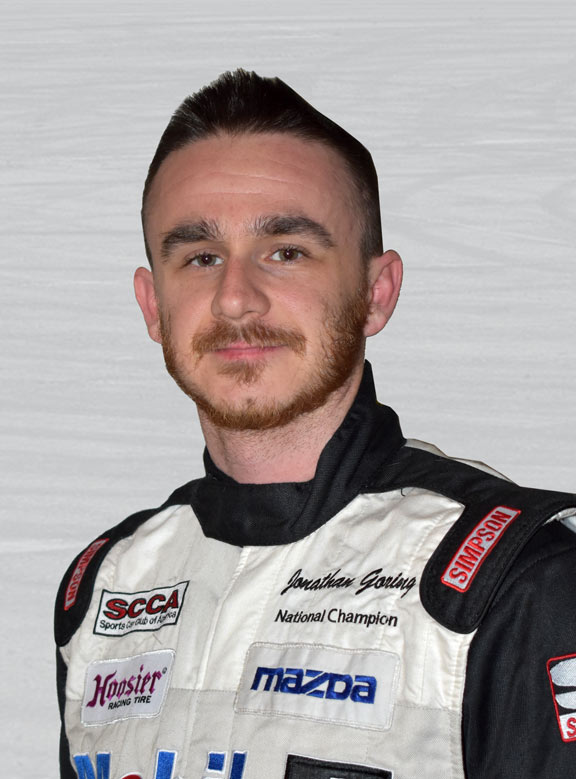
ABOUT THE AUTHOR
JONATHAN GORING
From 2006 Skip Barber National Champion to 2015 Spec Miata SCCA Runoffs Champion, and with the 2008 IMSA Lites title in between, I’ve been in the racing scene for quite some time. I’ve been fortunate to race against (and beat sometimes) the best drivers in the world currently racing in various top level motorsports.
I’m very passionate about the art/science of performance driving and want to share that passion with you.
WANT TO DRIVE FASTER THAN EVER?
Join my email list for twice monthly articles, driving tips, exclusive announcements on new things I’m working on and wisdom delivered straight to your inbox! You can unsubscribe at any time.

